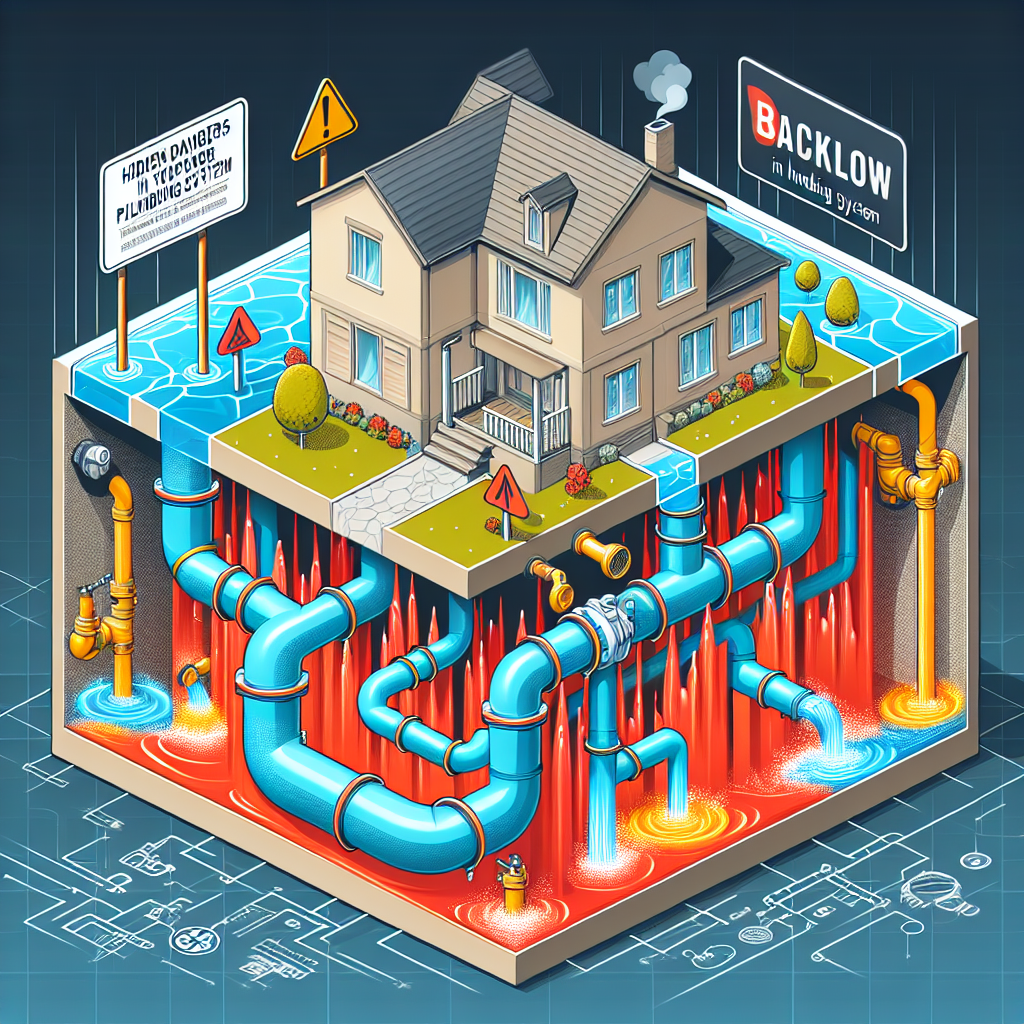When we turn on the tap or flush the toilet, we expect clean water to flow seamlessly. However, there’s a hidden menace that can disrupt this everyday comfort — backflow. This plumbing phenomenon poses significant risks, and understanding it is crucial for maintaining a safe and healthy household. In this article, we will dive deep into backflow, its dangers, prevention methods, and maintain a clean and functional plumbing system.
What is Backflow?
Backflow occurs when water flows in the opposite direction than intended. Typically, water should flow from the main supply line into your home. However, when there’s a sudden change in pressure — such as a broken water main or an unexpected surge from the municipal system — it can cause dirty water to flow back into your clean water supply. This reverse flow can bring along contaminants like bacteria, chemicals, and sediments, posing serious health risks.
The Dangers of Backflow: Why You Should Be Concerned
-
Health Risks: The most severe consequence of backflow is the potential for contamination. When water from sewage systems or contaminated sources enters your drinking water, it can lead to severe illnesses. Waterborne diseases can spread rapidly, affecting you and your loved ones.
-
Property Damage: Backflow can wreak havoc not only on your health but also on your property. Contaminated water can damage your plumbing fixtures, appliances, and even your home’s foundation. Repairing this damage can be costly and time-consuming, amplifying the importance of prevention.
- Legal and Compliance Issues: Many regions have regulations requiring the installation of backflow prevention devices in residential and commercial plumbing systems. Failing to comply can result in penalties and extra costs down the road.
How Does Backflow Occur?
Understanding the causes of backflow is crucial for prevention. Here are the most common scenarios that lead to backflow:
-
Backpressure: Created when a downstream pressure exceeds that of the water supply, often caused by pumps, boilers, or elevation changes. This situation can force contaminated water back into your plumbing system.
- Backsiphonage: This occurs when there’s a drop in pressure in the water supply, which can happen due to heavy water demand in nearby areas or a failure in the municipal water supply system. The result? Contaminants are sucked back into the clean water supply.
The Importance of Backflow Prevention
So, how can you safeguard your home and family from the dangers of backflow? Let’s explore some effective prevention measures:
1. Install Backflow Prevention Devices
One of the most effective ways to prevent backflow is by installing various types of backflow prevention devices. Here are a few common options:
-
Check Valves: These are simple devices that allow water to flow in only one direction.
-
Double Check Valves: These provide an extra layer of protection, consisting of two check valves that prevent backflow.
- Reduced Pressure Zone (RPZ) Assemblies: These are typically required in high-hazard situations, providing the highest level of protection.
2. Regular Maintenance and Inspections
Just like other appliances in your home, your plumbing system needs regular check-ups. Schedule annual inspections with a qualified plumber to ensure that your backflow prevention devices are functioning correctly. Routine maintenance can catch small issues before they become significant problems.
3. Be Mindful of Water Usage
In times of high water demand or when you notice drops in water pressure, be mindful of your water usage. Avoid running multiple appliances that require water at the same time, as this can exacerbate pressure changes within your plumbing system.
Signs of Backflow: How to Detect the Problem Early
Preventing backflow is vital, but knowing how to spot it early on can save you from future headaches. Here are some signs to look out for:
-
Unusual Tastes or Odors: If you notice a change in the taste or smell of your water, it may be a sign that contaminants have entered your water supply.
-
Discolored Water: Cloudy or discolored water can indicate the presence of sediment or rust, a sign that backflow may be occurring.
- Frequent Clogs or Plumbing Issues: If you encounter sudden plumbing issues, such as frequent clogs or slow drains, it might be worth investigating backflow.
Conclusion: Take Action Now
Understanding backflow may seem daunting, but with awareness and proactive measures, you can protect your home and family from its hidden dangers. By investing in backflow prevention devices, scheduling regular inspections, and being mindful of water usage, you can rest easy knowing that your plumbing system is safeguarded.
Backflow might be a hidden danger, but it doesn’t have to catch you off guard. Take action today, and ensure the healthy flow of water in your home continues without interruption. Keep your eyes and ears open to the signs of backflow, and always consult a professional when in doubt. After all, prevention is the best cure!


